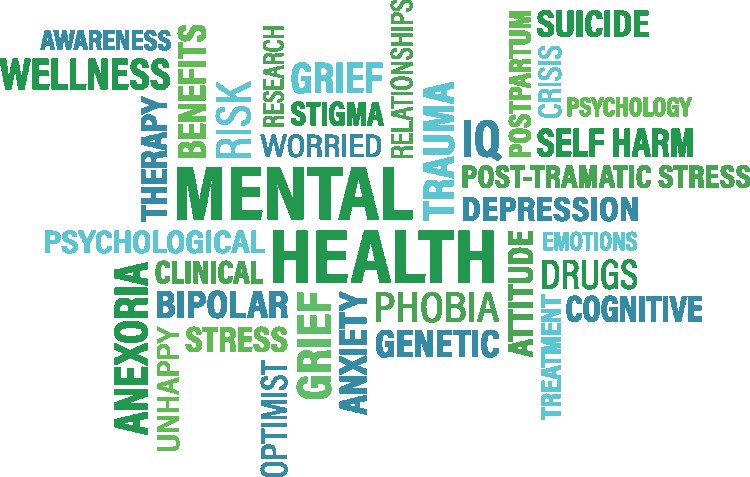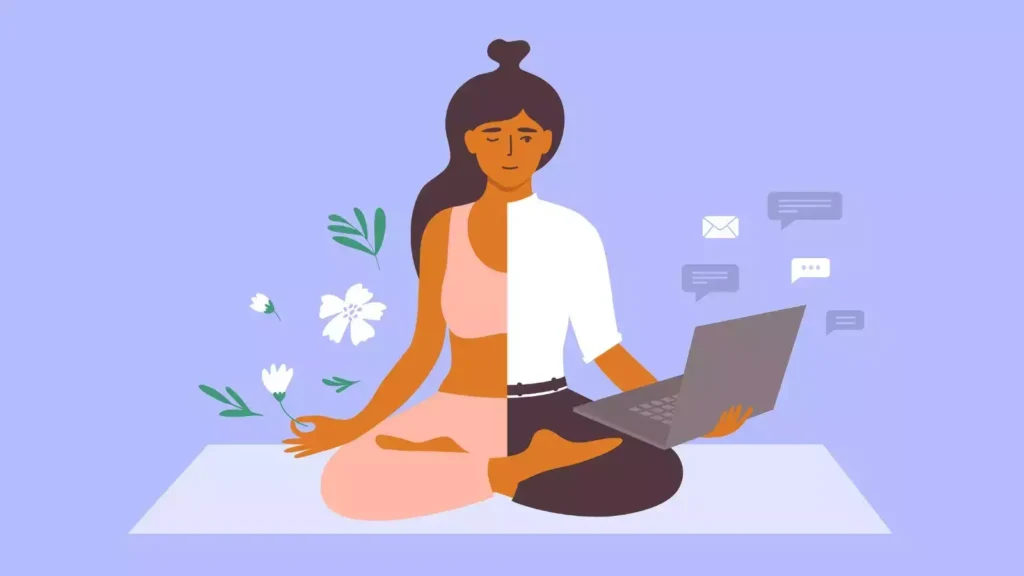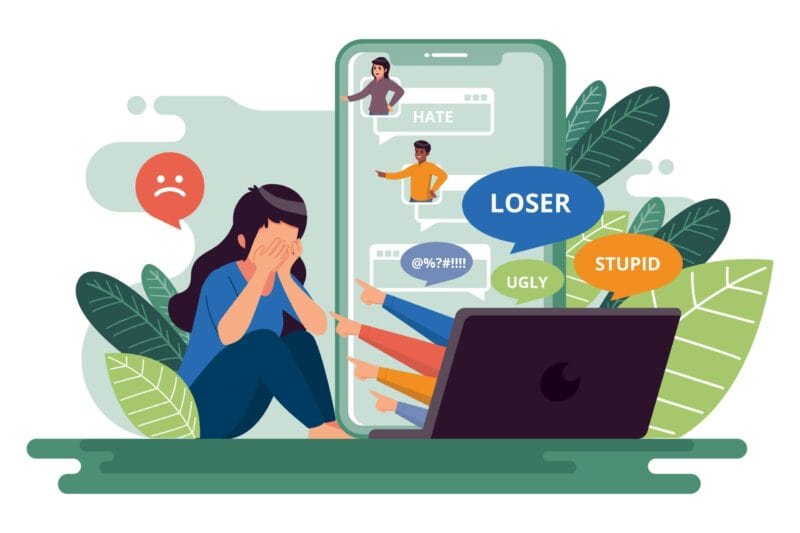The Digital Revolution has fundamentally reshaped the way we live, work, and interact with the world. The proliferation of technology and its constant presence in our lives has brought about numerous benefits but has also given rise to new challenges, particularly in the realm of mental well-being. In this article, we will explore the complex relationship between technology and anxiety, shedding light on the ways in which the digital age impacts our mental health. You will also find out how many girls chose to go for breast augmentation surgery in San Antonio thanks to social media!
The Digital Age: A Blessing and a Burden

In the Digital Age, technology is an integral part of our daily lives. It has connected us in unprecedented ways, facilitated communication, and made information accessible at our fingertips. It can help us get motivated to get things checked, like your teeth at the preventive pediatric dentistry in Fayetteville NC! However, the relentless pace of technological innovation, coupled with the ever-increasing demands of the digital world, has created a double-edged sword when it comes to our mental well-being.
Technology’s influence on our lives is pervasive, from the ubiquitous smartphones that we carry to the constant stream of information on social media and the pressures of a 24/7 work culture. This continuous connectivity has blurred the boundaries between work and personal life, leading to heightened stress levels and diminished relaxation. The fear of missing out, commonly known as FOMO, is a phenomenon exacerbated by technology, driving individuals to stay connected at all times. It’s essential to understand that our relationship with technology is multifaceted and can affect mental health in various ways.
Technology can be a source of both information and misinformation. With the internet’s vast expanse, accessing information is easier than ever, but it also presents challenges in discerning the credibility of sources. As a result, individuals can experience information overload and the anxiety of not being able to keep up with the deluge of content. This constant exposure to information, often of varying quality, can contribute to heightened stress and anxiety. When spending time online, you should focus your attention to things that can enhance your outdoor experience, such as purchasing the best men’s athletic shorts for running!
In addition to information overload, the digital world introduces the pressure to curate a perfect online persona. Social media platforms, in particular, encourage users to share idealized versions of their lives, often showcasing accomplishments, relationships, and experiences. This curated reality can lead to social comparison and feelings of inadequacy, which, in turn, can contribute to anxiety and self-esteem issues. On the bright side, thanks to these platforms you can find really good service for whatever you need really quickly, such as for example car ac repair in Toronto!
The Perils of Perfection: The Social Media Dilemma
Social media platforms play a central role in shaping our online interactions and self-perception. While they offer a platform for staying connected with friends and family, they also present a host of challenges to mental well-being.
Social media is a space where people often present an idealized version of their lives. This tendency to showcase only the highlights can lead to the “compare and despair” phenomenon. Individuals may compare their own lives to the seemingly perfect lives of others, which can result in feelings of inadequacy and anxiety. This pressure to present an impeccable image can be particularly burdensome for young people, who may be more susceptible to the influence of social media on their self-esteem. There are many documentaries made about this topic with the help of video production in Philadelphia!
The constant stream of notifications and the need to maintain an active online presence can contribute to a fear of missing out (FOMO). FOMO arises when individuals believe that they are missing out on exciting events or experiences that others are having. This fear can lead to compulsive checking of social media, even when it interferes with daily life and work. The anxiety associated with FOMO can be mentally exhausting, as it creates a perpetual sense of being “on call” to the digital world. If you spend too much time on social media and it causes you severe anxiety that you cannot overcome and live with, you can always get an easy IV hydration treatment to help you relieve the symptoms.
In addition to FOMO, the prevalence of cyberbullying on social media platforms is a growing concern. Online harassment can have severe consequences for mental health, as victims often experience feelings of shame, helplessness, and depression. The ability to remain anonymous online can embolden perpetrators, making it challenging for authorities to address cyberbullying effectively.
The Work-Life Balancing Act in the Digital Age
The digital age has brought about significant changes in the way we work. Remote work, in particular, has become increasingly common, and while it offers flexibility, it also presents challenges in maintaining a healthy work-life balance.
Remote work can lead to a sense of “always being at the office,” as the boundaries between work and personal life become blurred. The expectation to be available at all hours, answer emails promptly, and attend virtual meetings can create stress and anxiety. The pressure to prove productivity in a virtual environment can lead to overworking, causing burnout and deteriorating mental health.
Working from home could be difficult only while doing home remodeling in Westchester, otherwise, people love working from home or hybrid!
Furthermore, the digital age has ushered in the era of the “gig economy,” where individuals often work multiple jobs or freelance. They are able to do this from home while wearing robes for women and drinking coffee the entire work day! This precarious employment landscape can lead to financial insecurity and, consequently, anxiety about the future. Gig workers may lack the benefits and stability that traditional employment provides, compounding their stress.
Coping with Digital Age Anxiety
Managing anxiety in the digital age requires a multifaceted approach that encompasses awareness, self-regulation, and setting healthy boundaries.
Awareness is the first step in addressing digital age anxiety. Individuals must recognize the impact of technology on their mental health and identify specific triggers. This self-awareness can help in making informed choices about digital consumption.
Self-regulation involves the conscious management of digital use. This can include setting limits on screen time, practicing digital detox, and selectively curating one’s digital presence. Finding a balance between online and offline activities is essential for mental well-being. You can do so many productive things while spending some time online, so you wouldn’t feel bad afterward, such as researching more about how to sell a business!
Setting healthy boundaries between work and personal life is crucial, especially for remote workers. Establishing clear working hours and designating a dedicated workspace can help create a separation between professional and personal life.
The Power of Digital Detox
One of the most effective ways to combat the adverse effects of technology on mental health is by embracing the concept of a “digital detox.” A digital detox involves consciously and temporarily disconnecting from your digital devices and online activities. By doing so, you can regain control over your digital consumption and create space for real-life experiences.
Taking a digital detox doesn’t mean completely severing all online ties; it’s about setting aside specific periods to unplug. During this time, engage in activities that promote relaxation and self-care. You can also enjoy your ride during the detox if you earlier find an exotic car rental! This can include spending quality time with loved ones, practicing mindfulness, enjoying a hobby, or simply appreciating nature. A digital detox provides your mind with the much-needed respite from the constant barrage of digital information and notifications, allowing you to recenter and find balance.
The Rise of Mindful Technology Use

Mindfulness, often associated with meditation and self-awareness, can also be applied to our interaction with technology. Mindful technology use involves being present and fully engaged when using digital devices rather than mindlessly scrolling or multitasking. By integrating mindfulness into your digital interactions, you can enhance your well-being and reduce anxiety.
To practice mindful technology use, start by setting clear intentions for your online activities. Ask yourself why you are using a particular app or device and what you hope to achieve. Being conscious of your goals and the time you spend online can help you avoid aimless browsing and reduce the chances of getting caught in the digital rabbit hole.
Additionally, consider taking short breaks throughout your digital engagements to check in with yourself. Are you feeling anxious, overwhelmed, or distracted? If so, use these moments to refocus and ground yourself. Simple breathing exercises or quick stretches can help center your mind.
The Emergence of Digital Well-being Tools
Recognizing the impact of technology on mental health, many technology companies have started to integrate digital well-being tools into their products. These tools are designed to help users manage their digital consumption and create a healthier relationship with technology.
A good thing about the internet is that you can quickly find whatever information you need, such as which home renovation contractors in Colorado Springs are the best.
Features such as screen time tracking, app usage limits, and notifications settings allow individuals to gain insight into their digital habits and set boundaries. For example, you can track how much time you spend on social media or specific apps and set daily limits to avoid excessive use. These tools empower users to make informed decisions about their digital interactions, reducing anxiety associated with overuse.
Furthermore, there is a growing market for digital well-being apps and services that offer guided meditation, stress reduction exercises, and sleep tracking. These apps can be valuable resources for those seeking to improve their mental well-being in the digital age. They provide accessible tools to manage anxiety, stress, and sleep disturbances, enhancing overall mental health.
Cultivating Digital Resilience
Digital resilience is a concept that focuses on developing the mental and emotional strength necessary to navigate the digital age effectively. In a world filled with digital distractions, information overload, and online pressures, cultivating digital resilience can help individuals thrive rather than merely survive in this environment.
Did you know how many girls signed up for medical weight loss in Nolensville TN after comparing themselves with celebrities and influencers online?
One key aspect of digital resilience is the ability to adapt to changing technologies and digital trends. By staying updated and continuously learning, individuals can better navigate the digital landscape, stay relevant in their careers, and reduce the anxiety associated with the fear of technological obsolescence.
Moreover, resilience involves fostering a positive online presence and developing a healthy relationship with feedback and criticism. It’s essential to understand that online interactions can be both positive and negative, and resilience allows individuals to focus on the constructive aspects while effectively managing and learning from the negative ones.
Connecting with Digital Support Networks
The digital age has the power to bring people together in ways previously unimaginable. Online communities, forums, and support networks have emerged as valuable resources for individuals dealing with digital-age anxiety. These digital communities provide a space for people to share their experiences, seek advice, and offer support to one another. In these communities you can find also really good recommendations about certain services or which door installers in New Jersey are the best!
For example, there are online communities dedicated to mental health and well-being, where individuals can discuss their challenges, share coping strategies, and connect with others who understand their struggles. These communities foster a sense of belonging and reduce the isolation that can sometimes accompany digital age anxiety.
In addition to mental health communities, there are countless online resources and support networks for individuals dealing with specific digital challenges, such as internet addiction, cyberbullying, or social media-related stress. These communities can be empowering, offering valuable insights and strategies for overcoming digital age anxiety. You can meet some new people in these communities who can also provide information about things you’re interested in such as micro harmonics!
The Integration of Technology with Mental Health Services
As technology continues to shape our lives, it’s also playing a crucial role in improving mental health services and making them more accessible. Telehealth and teletherapy services have gained significant traction, providing individuals with the opportunity to connect with mental health professionals from the comfort of their own homes.
The use of technology in mental health services extends beyond therapy. Many mental health apps and online platforms offer self-help resources, mood tracking, and guided exercises to manage anxiety and improve mental well-being. These tools are particularly useful for individuals who may have limited access to in-person mental health services or prefer the convenience of digital resources.

Conclusion
In the digital age, the intertwining of technology and mental well-being presents a complex and dynamic landscape. Our exploration has revealed the multifaceted nature of this relationship, emphasizing the need for a balanced approach to harness the advantages of technology while mitigating its potential negative impacts on mental health. Some people started to focus more on their mental health while going through therapies such as stem cell therapy in Phoenix AZ.
We’ve delved into various coping mechanisms, from digital detox and mindful technology use to the rise of digital well-being tools and the cultivation of digital resilience. These strategies empower individuals to take control of their digital interactions, manage digital-age anxiety, and thrive in the digital age.
Furthermore, we’ve highlighted the significance of digital support networks and the integration of technology with mental health services, emphasizing how technology can connect people, provide resources, and enhance accessibility to mental health support.
As we move forward in the digital age, it’s crucial to adapt and evolve alongside technology while safeguarding our mental well-being. The dynamic interplay between technology and mental health will continue to shape our lives, and by implementing these strategies, individuals can foster a healthier and more fulfilling relationship with the digital world.
An extra advice/tip would be to get a patio misting system since it can make your environment feel so much fresher and more peaceful, where you could do your meditations and time off from the socials!
In this ever-changing landscape, embracing a balanced and proactive approach is the key to navigating the digital age while safeguarding our mental well-being. By recognizing the opportunities for positive change and implementing these strategies, like getting on reading more romance books, we can embark on a path towards a more harmonious coexistence with technology, fostering not just survival but a thriving existence in this exciting, fast-paced era.
